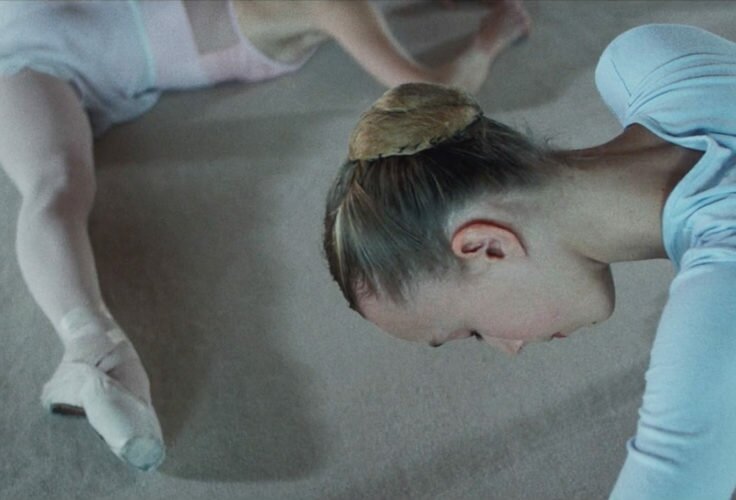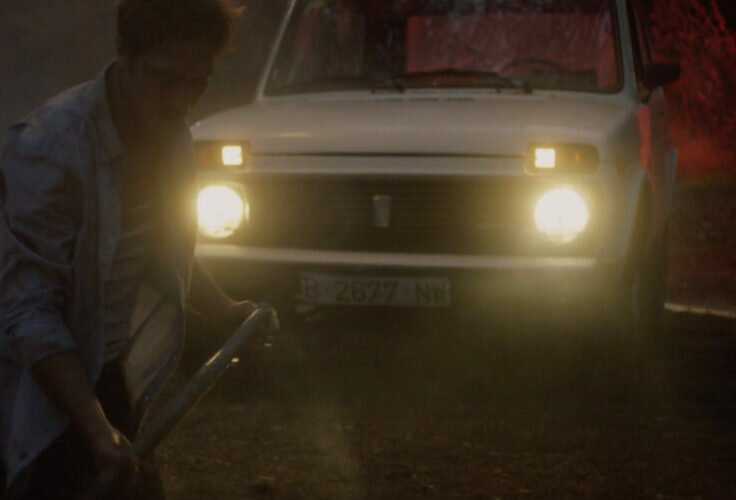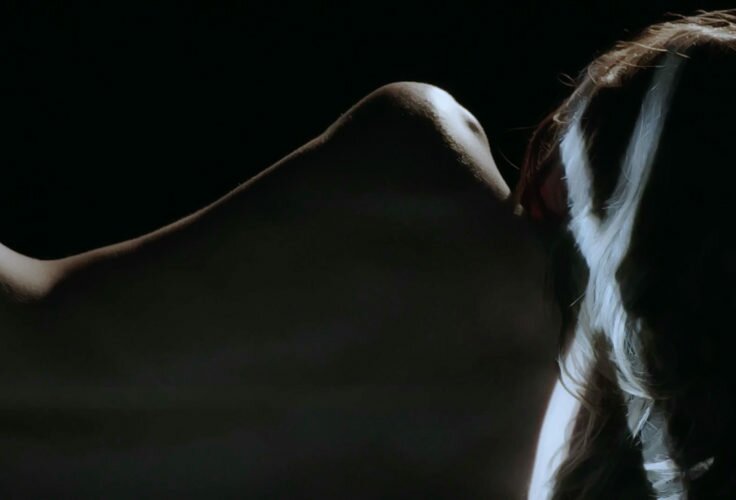Drake ha hecho un videoclip sobre recibir un tartazo en la cara, Child’s Play. Tyra Banks es la lanzadora. Y Ben Tuthill el testigo.

By Ben Tuthill



You don’t often see music videos as unsettling as Sam Rolfes’s for Berlin EDM duo Amnesia Scanner’s . Not because of any particular image, but because it’s rarely clear what you’re looking at. Chingy‘s visuals come close to resembling something familiar, but immediately dissolve into non-representational violence and fragmentation. I’m not sure if the one-shot video was filmed in a studio or a club or if it was even filmed at all. The floor might be the ceiling, the wall might be an explosion. The vague outlines of people look like humans but when you pause it’s very clear that they’re not. Like the music, there’s no real foundation to ground your experience. There is, as every Yeats-citing explainer of postmodernism has ever said, no center.
“There is no center” isn’t a particularly new feeling in European art -they’ve been doing that for a hundred years or so now-. What’s new is the increasingly severe de-centering of popular music. Pop music, by nature, has always opposed the anti-populist efforts of high art. It’s made for singing along to, for instant recognition, and -maybe most importantly- for dancing. In 1957, Chuck Berry sang in , “it’s got a backbeat, you can’t lose it”. Whether the backbeat is the tune, the refrain, the recognizable face, or the literal drumbeat, “you can’t lose it” has always summed up the essential spirit of pop music.
If there’s a backbeat in 21st-century popular dance music, it’s pretty damn easy to lose. The beat is falling apart, and so is everything else around it. Avant-garde German electronica is hardly a good representative of the state of popular music. More illustrative is Chief Keef‘s latest drill single Faneto. The backbeat is there, but if you haven’t lost it, Keef has. He shouts refrains with no particular interest in rhythm, rhyme scheme, tenor, or basic musical coherence. The visuals to accompany it are a nightmarish assembly of hip hop’s most disparate stereotypes: African animals, the trappings of European monarchy, American money (both stacked and burning), proletariat drugs, bourgeois fashion trends. All of this is framed by the astonished face of a little girl, looking through the bars at a zoo. At one point, for no particular reason, an eyeball rolls by her feet. She doesn’t blink, and neither do you.
To praise the combinative bizarreness of hip hop videos is blasé to anyone familiar with the past fifteen years of millenial pop culture. The more compelling question regarding contemporary hip hop videos, then, is *why* do we accept these combinations? In other words, what are we experiencing in place of the jarring contrast that a previous generation’s criticism expects of us? Why am I willing to accept Chief Keef, shirtless in baggy jeans with a CGI Planet Of the Apes makeover, sitting on a throne with a rapping about french shoes while he burns a pile of money? There are solid Marxist and identitarian answers to these questions. But they do nothing to explain the cohesive comfort I feel when I watch Faneto. The essence that holds Keef together exists at the same level that Amnesia Scanner wants to disrupt.
If Chief Keef exists quite happily at the margins of hip hop, take something closer to the center, like the most recent round of videos by Rae Sremmurd. throws a beach party in a lightning storm. The dancers in white along the shoreline against the tempest have an Homeric quality. Rae Sremmurd, with outfit-coordinated sun hats, umbrellas, toy dogs, and foot-long blunts, look like dandies partying against the Apocalypse. Near the end Swae Lee holds a pineapple to the camera as if it’s something hideous while his brother throws himself onto the ground in what ought to signify total defeat. Is this fun or horrifying? The music doesn’t help. Mike Will’s beat is ominous but good to dance to; Rae’s lyrics are, as usual, logically indecipherable. All of this would fall under the category of what we used to call “random!”, but now the strangeness just seems mostly sensible. Whatever is happening, it fits the mood of the music, even though its not particularly clear what that mood is.
It should be becoming pretty obvious that millennial pop music is founded on a very different backbeat than the pop music that came before it. Not because new backbeats are interesting, or disruptive, but because they’re, for whatever reason, pleasurable. This maybe is what’s most unsettling about Amnesia Scanner’s video. It ought to be disturbing, but by the end of three minutes I’ve happily accepted it. The music sounds nice to me and the visuals are exciting. I want to watch it again.
This puts pop music in a strange position. It’s the music for a generation that, knowingly or not, has accepted Deconstruction and is ready to move forward from the “groundless ground” of that acceptance. Tunes don’t follow a beat. Images aren’t built on claritas, consonatia and integritas. Dancing can consist of just . None of this strikes me as disturbing, or even particularly nihilistic. It just doesn’t fit into an easily deployed critical framework. There is a center, but it’s just not at the center of anything.






















